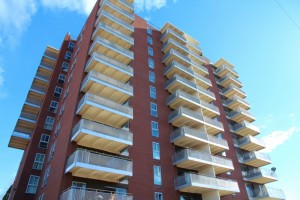The Metro Denver Economic Development Corporation (Metro Denver EDC) and the Denver Metro Chamber of Commerce presented the 2015 Metro Denver Economic Forecast yesterday at Vectra Bank’s 22nd…
Source: 2015 Economic Forecast | Metro Denver
Click The Following Link To View Report: 2015 Economic Forecast for Metro Denver – Apartment Market Key Indicators

The 2015 Economic Forecast is researched by Patty Silverstein, chief economist for the Metro Denver EDC, and reviews the events of the past several years as well as highlighting emerging trends for this year. The forecast includes national-level information and includes estimates for statewide indicators as well.
“Metro Denver will continue to benefit from solid economic performance in 2015. Even as we experience increasing employment and confident consumers, we need to recognize that our aging and retiring baby boomers and well-educated and ready-for-the-workforce millennials are changing the face of our community and influencing housing patterns and how we do business,” said Silverstein.
Compared with the national average, Metro Denver’s employment growth in 2014 was more than 1.3 percentage points higher at 3.2 percent, which included gains in each supersector except information. Silverstein forecasts job growth in 2015 to be 3 percent, which represents the addition of about 45,000 jobs.
According to Silverstein, four supersectors of the regional economy should post strong employment growth in 2015: natural resources & construction (5 percent), education and healthcare services (4.1 percent), professional and business services (4 percent), and leisure and hospitality (3.6 percent).
“As the area continues to attract new companies, draw in talented workers, and promote entrepreneurship, Metro Denver will have better-than-average job growth and a lower unemployment rate than the United States and Colorado,” said Silverstein.
In fact, robust job growth in 2014 lowered Metro Denver’s unemployment rate in October to 3.6 percent, the lowest rate since October 2007. While unemployment increased slightly since October, the rate remains near historic lows for the region.
“With a forecasted average unemployment rate of 4 percent in 2015, our companies can expect to see a very tight labor market,” said Silverstein.
Silverstein also highlighted the demographic shifts that are changing the face of Metro Denver’s workforce. She noted that millennials (born between 1981 and 1997) now compose the largest population group in Metro Denver.
“While generation X and baby boomers dominate the workforce today, the millennials are making their mark on the workplace and will represent the largest component of the labor force within 10 years,” she explained.
Changing demographics not only have implications for future labor force growth patterns and consumer spending, but also residential real estate purchases.
The Metro Denver EDC’s CEO Tom Clark says that with limited supply in the residential real estate market and above-average population growth, home prices and appreciation are rising and construction activity is picking up.
“While increased residential construction activity is very positive for our economy, we do see challenges related to millennials and baby boomers seeking affordable, owner-occupied housing due to almost flat construction of condos and a historic rise in apartment construction,” said Clark. “We are working with the state legislature on construction defects legislation to address this critical gap.”
The forecast for Metro Denver includes the seven counties of Adams, Arapahoe, Boulder, Broomfield, Denver, Douglas, and Jefferson. Economic indicators analyzed include: population trends, employment by industry, unemployment, retail sales growth, commercial real estate, and residential activity.
2015 Forecast – Key Indicators(e)=estimate (f)=forecast
| Metro Denver | 2014 (e) | 2015 (f) |
|---|---|---|
| Population | 3.002 million | 3.053 million |
| Net MIgration | 30,629 | 30,879 |
| Employment Growth Rate | 3.2% | 3% |
| Non-Agricultural Employment (thousands) | Total: 1,512.6 | Total: 1,557.9 |
| Unemployment Rate | 5% | 4% |
| Retail Trade Sales Growth Rate | 5.7% | 5% |
| New Residential Units | 17,902 | 18,836 |
Notable indicators from this year’s forecast report include:
National Economy
- The United States has started on a new economic growth path. The nation’s employment level in mid-2014 finally surpassed the pre-recession peak, representing a 76-month job recovery. Job gains have been widespread, with preliminary data suggesting that all states posted an average annual increase in employment from 2013 to 2014. Most analysts expect U.S. economic activity to strengthen in 2015 due to rising wages leading to increased consumer spending, improved home sales and new construction activity, and active business hiring. The employment growth rate is expected to increase from 1.9 percent in 2014 to 2 percent in 2015.
- Gross domestic product will grow at a 3.1 percent pace in 2015, which is faster than the historic average, spurred by enhanced consumer spending and stronger business investment. As GDP and employment expand, the nation’s unemployment rate will drop to 5.5 percent. Rising income and low levels of inflation bode well for the nation’s housing markets, with expected increases in construction activity and home sales.
- A big surprise in the latter part of 2014 was the rapid decline in the price of oil, which dropped from a monthly average price of $106 per barrel in June 2014 to $59 per barrel in December 2014. The resulting drop in gasoline prices means that consumers have more money to spend on other goods, which is a plus for the U.S. economy as a whole. In addition to potentially rising interest rates, the greatest risks to U.S. economic growth are global economic conditions and social and political instability in the Middle East and Russia.
Colorado Economy
- Colorado maintained its ranking as a top 10 state for employment growth during 2014 and will post a strong 2.7 percent increase in employment in 2015. The employment base is expected to reach 2.5 million workers in 2015, representing the addition of over 66,000 jobs.
- The natural resources and construction, leisure and hospitality, and professional and business services supersectors are expected to lead the state in employment growth through 2015. Despite the strong growth rate at the state level, employment growth has not been consistent across the state’s regions. Employment growth in Metro Denver has been strong and diverse, while Weld County has been the fastest growing region in the state due to the expanding energy sector. On the other hand, the Colorado Springs metropolitan area has experienced a slower growth rate due to its reliance on military spending, and activity remains sluggish on the Western Slope.
- As companies continue to increase their staffing levels, Colorado’s unemployment rate will steadily decline to levels below “full-employment,” indicating an increasingly tight labor market. Personal income growth will accelerate in 2015 to 6.7 percent due to increasing wages, rising housing prices, and increased investment. Declining unemployment and rising personal income bode well for consumer spending in 2015. Retail trade sales increased by about 7.2 percent in 2014 as more confident consumers were encouraged to shop. A slightly slower 6 percent growth rate is expected in 2015 due to lower gasoline sales and more frugal spending patterns. Colorado’s expanding employment base, high quality of life, and increasing presence in the global business community continue to attract individuals and businesses to the state.
Metro Denver Economy
- Over 60 percent of employment in Colorado is located in the seven-county Metro Denver region. Metro Denver job gains accelerated during 2014, finishing out the year stronger-than-expected with the addition of 46,200 jobs. An additional 45,000 jobs are expected to be added in 2015, representing a 3 percent growth rate. Metro Denver will experience particularly strong employment growth in the education and healthcare services, professional and business services, and leisure and hospitality supersectors.
- With limited supply in the residential real estate market and above average population growth, home prices will continue to rise and construction activity will pick up. The median home price in Metro Denver increased 9.4 percent in 2014 to $306,900 compared to the U.S. median of $207,300, and prices are expected to rise another 6 percent in 2015. Residential building permits rose 5.7 percent between 2013 and 2014 as developers became more confident in the economy and demand continued to rise. An additional 18,800 housing units are anticipated in 2015. Multi-family construction represents nearly 50 percent of the new units built, significantly higher than the 35 plus-year average of multi-family units representing roughly one-quarter of construction. The high level of multi-family activity reflects more interest in transit-oriented development as the FasTracks system nears completion, as well as baby boomers’ desire for more maintenance-free housing options and millennials’ slow movement into home ownership roles.
- A vibrant entrepreneurial community bolsters the expanding Metro Denver economy. Indeed, Forbes ranked Denver as the second-best city to launch a start-up business and NerdWallet ranked Denver the fifth-best city in the U.S. for millennial-aged entrepreneurs. The solid business fundamentals in Metro Denver ensure that the region will continue to expand in 2015 and beyond.


